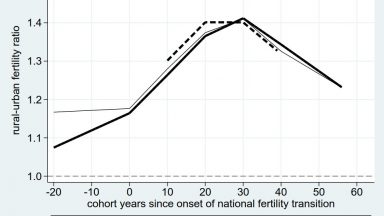
While the number of live births a woman has over her lifetime (i.e. fertility) fell to low levels in most world regions, women in sub-Saharan Africa still have near to five children on average. This high level of fertility not only hinders the empowerment of women and progress in child and maternal health. High fertility also constitutes a principal (endogenous) factor in the fast growth of urban populations. Furthermore, high fertility in rural areas exerts demographic pressure on the environment and society, thereby driving out-migration towards cities as an exogenous factor of urban growth. We aim at better understanding the patterns of past fertility decline in low- and middle-income countries in order to better conceive future trajectories of fertility in sub-Saharan Africa. We look at more than 60 countries in Africa, Asia, and Latin America, relying on more than 200 repeated and country-specific World Fertility Surveys and Demographic and Health Surveys. “Project duration: 2018-2022”.

Fertility decline in urban and rural areas in developing countries
While there are impressive international similarities in the trajectories of fertility decline in urban areas, the paces of the within-country urban-to-rural diffusion of birth limiting behaviors vary substantially.

Contraceptive transition in developing countries
Progress in human development and urbanization leads to a weaker effect of breastfeeding on extending the period of postpartum amenorrhea